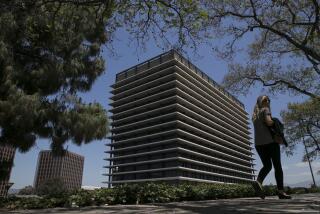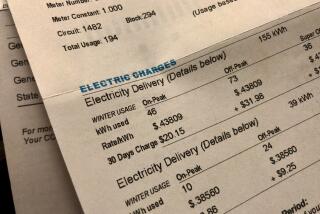Why 33% renewables by 2020 may be impossible
- Share via
California legislators are considering a proposal to require 33% of the state’s electricity to come from renewable sources by 2020. In its Aug. 19 editorial, “Sacramento’s power failure,” The Times writes that failure to pass the measure would constitute a lack of political will. As chief executive of Southern California Edison, I respectfully believe this issue is more complicated.
Southern California Edison manages the largest portfolio of renewable energy in the United States. We share California policymakers’ vision of a cleaner, smarter electricity grid, and we’ve been a leader in making that vision a reality. I hope these actions have earned us the opportunity to say that there are serious challenges to achieving a 33% goal by 2020. Those challenges have as much to do with the laws of physics as they do the laws of California.
First, much of the debate in Sacramento has focused on the potential of the renewable energy industry to create green jobs in California, and for good reason. Eighty percent of Southern California Edison’s future renewable energy projects are scheduled to be developed in our state and will create good California jobs. But if the state’s utilities can’t also buy renewable power from outside the state, California simply will not achieve its environmental goals.
Californians are proud of our unique contribution to the nation’s citrus, dairy and wine industries. We do not build protective walls around them, because we believe open markets are best for everyone. The same principle applies to renewable energy production. Artificially constraining the supply options to the borders of California will result in fewer renewable projects, delays and higher customer costs that would make our state less competitive in the long run.
A second challenge is that the best sources of renewable energy are far from where electricity customers live. This means more transmission lines will be needed. A recent study by the California Public Utilities Commission (CPUC) found that achieving the 33% goal will require 11 new transmission lines. Once a transmission line is proposed, it takes about 10 years to build. With only a few new lines in development, a 2020 deadline is simply unattainable.
Third, what happens to renewable power when the wind doesn’t blow and the sun doesn’t shine? Electricity can’t be stored (although we’re working on that), so controllable “on-demand” electricity production from conventional generation is required to “firm” or “fill in” power when the intermittent wind and solar resources aren’t producing electricity.
The California Independent System Operator, which has primary responsibility for ensuring that the state’s electricity system functions reliably, has indicated that reaching the existing goal of 20% renewables will require the continued operation of all existing conventional plants to back up the less reliable renewables. For the same reason, even more conventional plants will be needed to meet the increase to the 33% goal. Yet no new power plants are being built in the L.A. basin due to litigation over air quality permitting issues. And a pending state mandate to enhance protection for ocean habitats could force some of the state’s 19 coastal power plants to close.
Taken individually, each of these policy proposals has merit. But combined, they actually work against each other and jeopardize reliability, increase costs and impede California’s ability to achieve higher renewable goals.
Finally, achieving the 33% goal will require massive investment. The previously mentioned CPUC study estimated that the required new generating facilities, transmission lines and other grid infrastructure will cost $115 billion. Californians may not be prepared for the potentially large impact on electricity bills this investment will require, particularly in this economy.
We are proud of California’s leadership in renewable energy and excited about the future of alternative green generation technologies. Achieving California’s goals for renewable energy takes a long-term commitment and an enormous amount of investment, not a feel-good slogan. The underlying rules do matter. Let’s get this important energy policy decision right.
Alan J. Fohrer is chief executive of Southern California Edison.
More to Read
A cure for the common opinion
Get thought-provoking perspectives with our weekly newsletter.
You may occasionally receive promotional content from the Los Angeles Times.










